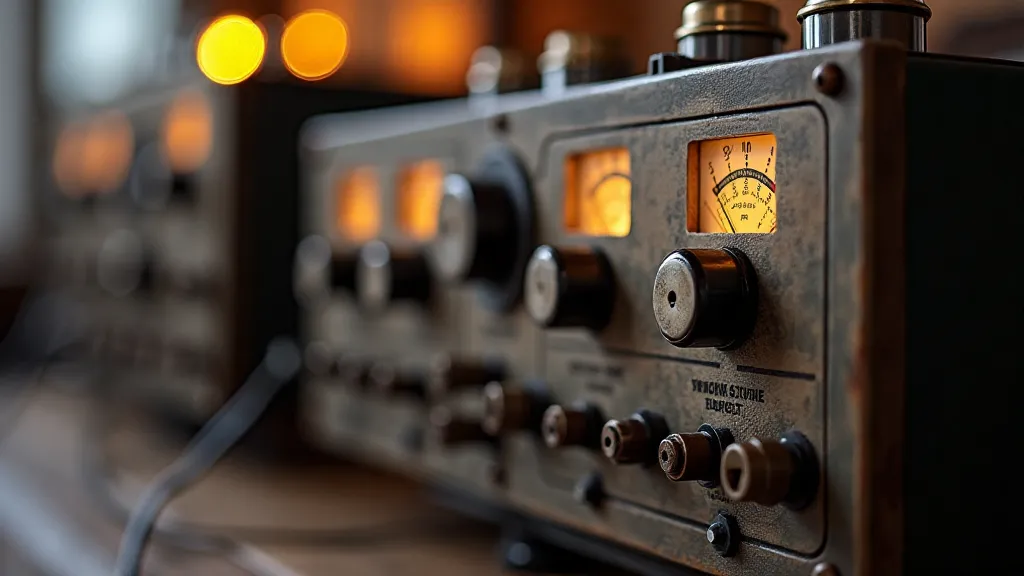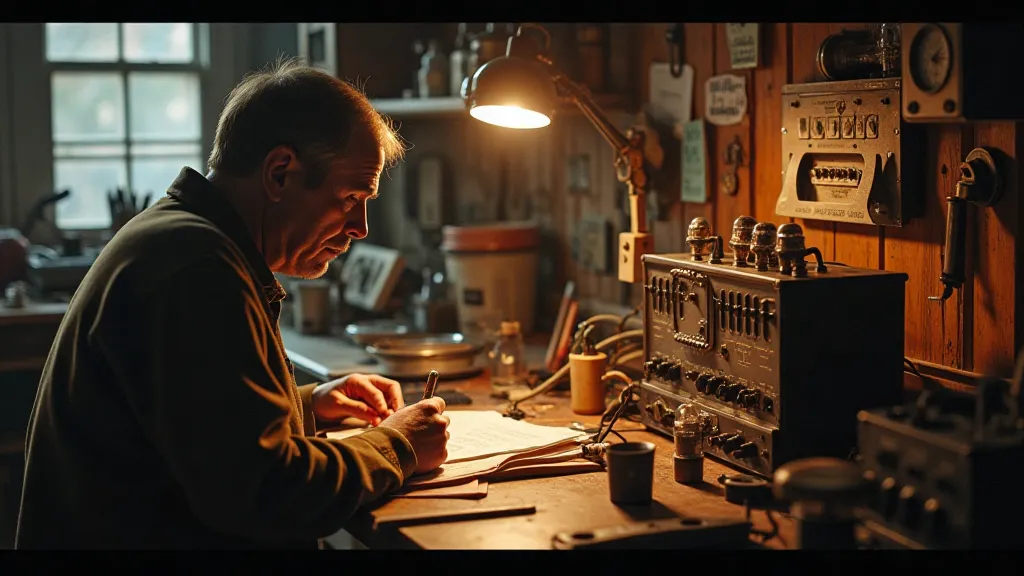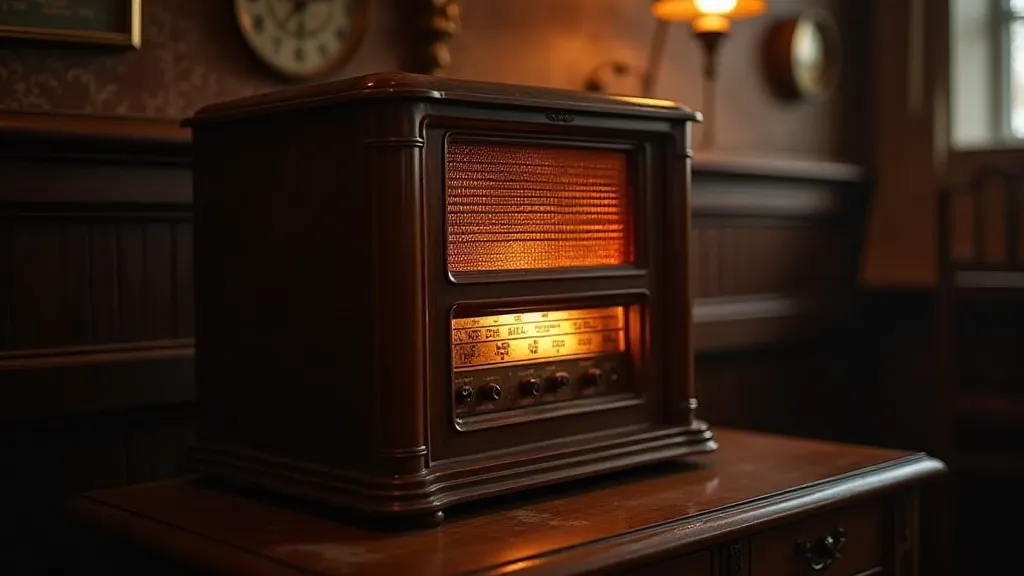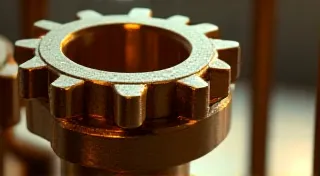Whispers in the Vacuum: Aural Archaeology Through Tube Testing
There’s a certain magic to the hum of an antique radio. Not the sterile, digital precision of modern audio, but a warm, breathing sound, hinting at a bygone era of crackling fireplaces, swing music, and whispered news bulletins. Bringing these machines back to life is more than just fixing electronics; it's an act of aural archaeology, carefully excavating lost voices and resonant moments. And at the heart of this process lies the humble vacuum tube tester, a fascinating piece of equipment vital to the resurrection of these vintage treasures.
My own journey into this world began with my grandfather’s Zenith Trans-Oceanic. It sat in the attic, shrouded in dust, a silent sentinel of a time I’d only known through stories. He's gone now, but I recall vividly the weight of that radio in my young hands, the promise of music and connection that emanated from its aged cabinet. That radio wasn’s just an object; it was a connection to him, a tangible link to a past that felt both distant and intimately familiar. When I finally coaxed it back to life, the rush of static resolving into a faint Glenn Miller tune remains one of my most treasured memories.

The Vacuum Tube: More Than Just a Component
To understand the importance of tube testing, we need to appreciate the vacuum tube itself. Before transistors, these glass enclosures were the building blocks of electronic amplification and signal processing. Each tube, with its complex arrangement of electrodes – the filament, cathode, grid, and plate – meticulously crafted, performed a critical function. They're more than just components; they’re miniature marvels of engineering, products of a time when craftsmanship and ingenuity were paramount. You can almost feel the care and precision that went into their construction, a stark contrast to the mass-produced parts we often encounter today.
Consider the tubes used in broadcast transmitters, capable of transmitting signals for hundreds of miles. Or the delicate triodes found in high-end preamplifiers, responsible for amplifying weak signals with minimal distortion. The nuances of their performance directly influenced the quality of the audio signal, the strength of the broadcast, and the overall experience of the listener. A failing tube wasn't just an inconvenience; it was a compromise in the artistry of the device.
The Tester: Unveiling the Story Within
So, what does a vacuum tube tester do? Simply put, it assesses the internal condition of a tube, providing data beyond a basic visual inspection. The tester applies voltages to the tube's electrodes and measures the resulting currents and voltages. This information is then translated into a series of readings – emission, grid leak, plate resistance – that indicate the tube’s overall health. A "good" tube will fall within a specified range, while a failing tube will exhibit deviations, often pointing towards specific failures like a worn-out filament or a leaky grid.
Early testers were often very simple, relying on visual cues and basic voltage measurements. As technology advanced, so did the testers, offering more comprehensive and nuanced assessments. Some even incorporated specialized circuits to test for microphonics (the tendency of a tube to vibrate and generate noise) or to characterize its behavior under different operating conditions.
The process itself is almost meditative. The gentle hum of the tester, the satisfying click as you insert a tube, the scrutiny of the dials – it’s a ritual, a moment of quiet contemplation amidst the complexities of restoration. Each reading tells a story, revealing the tube’s history, its operational life, and the subtle signs of age and wear.
Beyond the Numbers: A Sense of History
But tube testing isn’t just about the numbers. It’s about connecting with the past. Holding a tube in your hand, you’re holding a piece of history, a tangible link to the engineers, technicians, and listeners who relied on these devices. You can almost imagine the radio repairman of the 1940s or 1950s, diagnosing problems with a similar tester, sharing knowledge and skills passed down through generations.

I’m often surprised by the markings on older tubes – the manufacturer's logo, the date code, the sometimes cryptic labels that offer glimpses into the tube’s origin and purpose. These aren't just identifiers; they're clues, fragments of a larger narrative.
Schematics & Resources: The Aural Archaeologist’s Toolkit
For those venturing into vintage radio restoration, having access to schematics and specifications is invaluable. Understanding the circuit design helps you identify which tubes are critical for operation and which are more likely to fail. Tube databases – both online and in print – provide detailed information about tube characteristics, pinouts, and suitable substitutes.
A good understanding of basic electronics principles is also essential. While tube testing itself doesn’t require advanced knowledge, being able to interpret the readings and diagnose circuit problems will significantly improve your success rate.
The Emotional Resonance of Resurrected Sound
The culmination of the restoration process – the moment when the radio finally sings again – is an experience unlike any other. The crackle of the tubes warming up, the gradual emergence of a clear and vibrant signal, the rich and warm sound filling the room – it’s a resurrection, a triumph over time and neglect.
More than just repairing a machine, you’re preserving a piece of our cultural heritage, rekindling memories, and sharing the magic of a bygone era. You are, in a sense, an aural archaeologist, uncovering lost voices and resonant moments, one tube at a time.

The whispers in the vacuum – those subtle nuances of sound, the crackle of the tubes, the richness of the audio – they're a reminder of the ingenuity and craftsmanship that shaped our world, and a testament to the enduring power of human connection.





